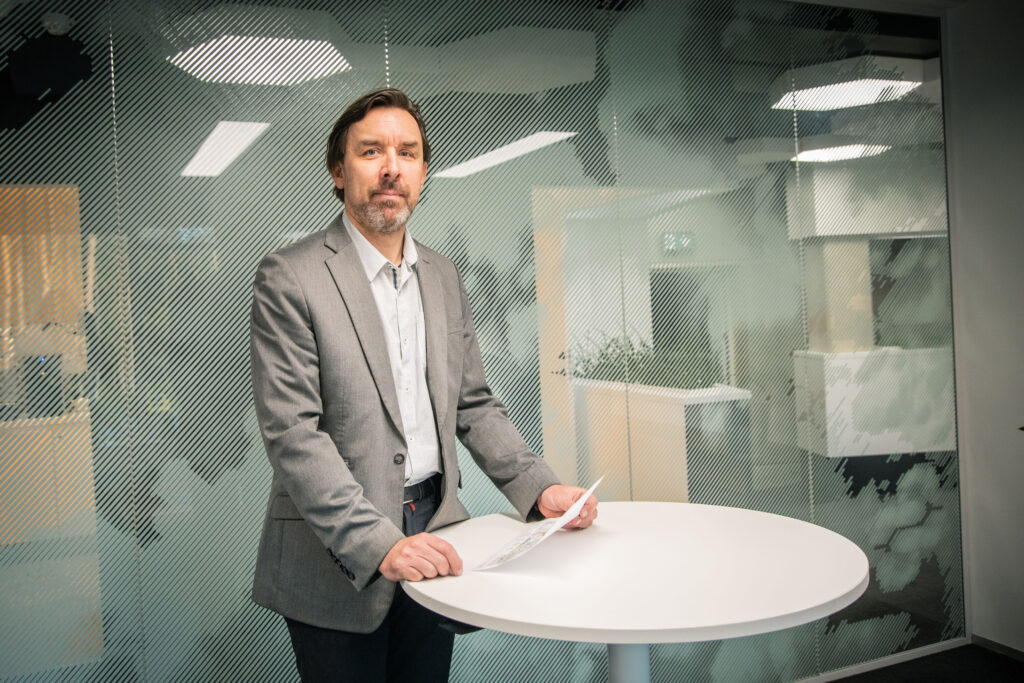A new European Union-backed project has set out to demonstrate how unmanned aerial vehicles, such as drones, and conventional aircraft can safely share airspace in densely populated urban areas. Called GOF 2.0 Integrated Urban Airspace Validation, the effort has a budget of €5.5 million and commenced January 1. It has an end date of 31 December 2022 and involves 13 scientific and commercial partners from Austria, Estonia, Finland, Germany, Poland, and the UK, all of which are involved in the drone and aviation industry.
The Estonian Air Navigation Service (EANS), a wholly owned company of the Estonian Ministry of Economic Affairs and Communications, is leading the new project. According to Üllar Salumäe, head of air traffic services and a member of the management board at EANS, the work of GOF 2.0 builds on an earlier project — GOF 1.0 — involving Estonian, Finnish, and other partners, to demonstrate the integration of unmanned and manned aviation in the same airspace, with trials run at airports in both Tallinn and Helsinki.
This new project is specifically focused on urban airspace, a particular acute issue in Estonia, as Tallinn Airport, as well as the offices of EANS, are located just outside the city. Unmanned vehicles, dominated by drones, are a “fast growing part of aviation,” Salumäe noted, presenting challenges for operating conventional air traffic in the same airspace.
“Drones used to be limited for military operations only, so the military would inform controllers that they were operating some unmanned vehicles and that was fine,” says Salumäe. “But then drones became a hobby for quite a lot of people and available to everybody.” As Salumäe points out, an average citizen can pay under €100 to acquire a drone from eBay, and not just the kinds of toy drones that reach a maximum height of 100 meters, more professional vehicles, which have been adopted en masse by various groups, from wedding photographers to firefighters.
“The problem with drones is that everybody can fly drones,” notes Salumäe. “We are not even talking about terrorists using them, it is just some guy who bought himself a drone, and doesn’t know about the rules,” he says. “You can just imagine how an aircraft is departing, and the drone happens to fly into the engine of the aircraft,” he says. “It can be rather dangerous, especially if drones are operated in the vicinity of the airfields.”

While simply banning these unmanned aerial vehicles from urban airspace is one solution, Salumäe says it is unlikely to hold. As countries become more urbanized, there is actually increased pressure to turn to unmanned vehicles to transport goods or even people, eventually.
“Businesses are in city centers and people want to do business with drones,” says Salumäe. “But Tallinn Airport is located in the center as well and they don’t fit into the same airspace,” he says. “That is a problem.”
Finding solutions
EANS’ consortium partners include Unmanned Systems from the UK, and Finland’s Air Navigation Service Finland, as well as companies Robots Expert and Vaisala. The consortium’s Polish members are Droneradar, the Polish Air Navigation Services Agency, and the Institute of Bioorganic Chemistry of the Polish Academy of Sciences. There are also several other Estonian partners, Cafa Tech, a Tallinn-based computer and visual technology firm, and Threod Systems, based outside of Tallinn, which specializes in building drones.
Rounding out the consortium are several Austrian participants, including Vienna-based Dimetor, which provides connectivity solutions for unmanned aerial vehicles connecting mobile network operators to U-space; Ehang Holdings, also based in Vienna, an autonomous aerial vehicle developer; as well as Frequentis, which will provide navigation aids, radar systems, voice communication systems, and data analysis Resources; and Vaisala, a Finnish company providing microweather information to U-space.
The stated goal of the consortium is to demonstrate the viability of serving unmanned aircraft systems, electric vertical takeoff and landing aircraft, and manned operations in an urban space, using existing air traffic management and U-space services and systems. A significant component of the project will be data sharing across traffic control managers and aircraft operators relying on precision weather and telecom networks.
“We are still separating our drones from conventional air traffic,” says Salumäe. “The idea is to test the technology to keep the conventional air traffic and unmanned air traffic in the same data sphere, so that everyone has the same data,” he says. “We want to ensure that air traffic controllers and pilots of commercial aircraft have information about drone operators and vice versa.”
In addition to creating data-sharing platforms, the consortium will also tackle rules and regulations to ensure the safety of using drones. These can be used by regulators, to better manage airspace, as well as by technology companies, to improve their technology and to make it more compliant and safe. “You achieve safe integration by testing the vehicles,” says Salumäe. “Usually this is achieved by limiting some part of the airspace:”
Currently, the GOF 2.0 consortium will carry out demonstration flights including manned and unmanned vehicles in the second half 2021, which will be followed by a second set of demonstrations. Initial results will be collected by the end of the year. Once these are completed, the consortium will write up a final report.
“We will know what kind of procedures must be in place, what should be the requirements for drone makers,” says Salumäe. “Those are the sorts of outcomes we are expecting from there.”
Yet the results of GOF 2.0 will be much more than that, Salumäe maintains.
“For us, we are gaining knowledge for the European aviation community,” Salumäe says. “In a larger sense, the result of those projects will be creating a U-space, where drones operate with conventional air traffic in the same space without any problem or hazard,” he says. “This is the ultimate goal.”
Written by: Justin Petrone
This article was funded by the European Regional Development Fund through Estonian Research Council.
 Back
Back



